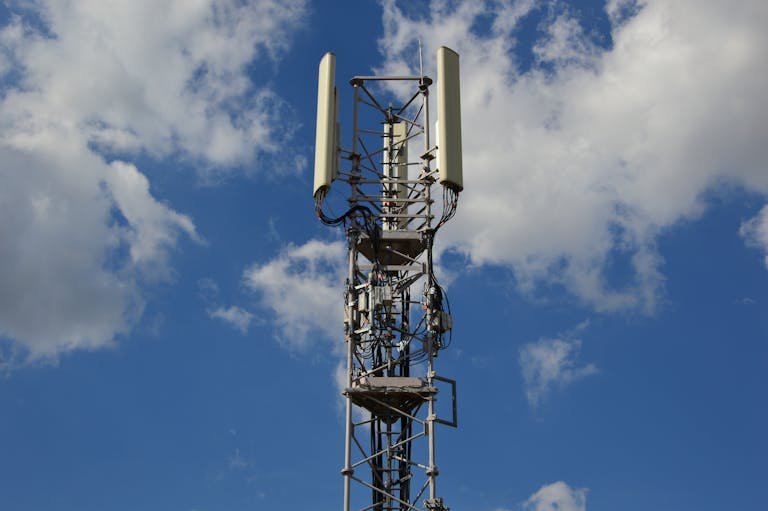Unlocking Value Through Automation in Wireless Networks

An interview with Khurram Chaudhry, Vice President of Products and Engineering at Aircom
In today’s fast-paced world, the demand for seamless and efficient wireless networks has never been higher. As the complexity of managing these networks increases, automation becomes a critical tool for network operators. To explore how automation is transforming the management of wireless networks, we sat down with Khurram Chaudhry, Vice President of Products and Engineering at Aircom, a leader in providing innovative software solutions for telecom.
Khurram, thank you for joining us today. Can you tell us about your role at Aircom and the company’s focus in the telecom industry?
Khurram Chaudhry: Thank you for having me. At Aircom, I oversee product development and engineering for our product portfolio, with a strong focus on innovation and efficiency. Our primary aim is to empower telecom operators by providing them with advanced tools for network planning, optimization, and network management. As wireless networks evolve, particularly with the advent of 5G, the complexity of managing these networks has increased exponentially. This is where automation plays a crucial role, helping operators unlock significant value by improving efficiency, reducing costs, and enhancing the overall quality of service.
Khurram Chaudhry: Absolutely. Automation in wireless networks is multifaceted. At its core, it involves automating routine tasks such as network configuration auditing, generating RF coverage plots, performance monitoring and optimization routines, etc., which traditionally required manual intervention. For example, in network planning, automation tools can drive tedious tasks such as keeping the planning environment in sync with the OSS, inventory data and more. Further, automation within planning can entail complex workflows around generating nationwide coverage plots or coming up with recommendations to improve existing design. From what we see, all mobile operators realize the role of automation to handle networks as they become more complex.
That sounds impressive. Can you give us an example of how Aircom’s solutions are leveraging automation to deliver these benefits?
Khurram Chaudhry: Certainly. I can give you several examples. One of our flagship products, SmartCM, is a great example. SmartCM leverages automation to streamline the configuration management process across wireless networks. It automatically identifies and rectifies configuration inconsistencies, which can lead to network outages or degraded performance if left unchecked. By automating this process, operators can ensure that their networks are always operating at peak efficiency, which is particularly important as networks become more complex with the integration of 5G technologies. In another of our products, CogniSense, which is a BI platform, we leverage NLP (Natural language processing) to automatically fetch and dashboard data of interest. The end-users, who are typically RF Optimization Engineers, find it very valuable as the automation we have built enables them to find answers quickly.
The integration of automation seems crucial as we move into the 5G era. What do you see as the future of automation in wireless network management?
Khurram Chaudhry: The future of automation in wireless network management is incredibly exciting. As we move further into the 5G era and eventually toward 6G, networks will become even more complex, with a vast number of interconnected devices and applications. Automation will be key to managing this complexity efficiently. We foresee a future where networks are fully autonomous, capable of self-healing, self-optimizing, and even self-constructing, with minimal human intervention.
Artificial intelligence and machine learning will play a significant role in this evolution, enabling networks to learn from past data and make informed decisions in real time. This will not only enhance the performance and reliability of networks but also unlock new revenue streams for operators by enabling innovative services and applications.
That’s fascinating. Before we wrap up, what guidance would you give to implement automation in managing networks?
Khurram Chaudhry: First, I think there’s no one defined path to achieve automation. I see this as a journey where we collaborate with our customers and learn from each other.
When implementing automation in wireless networks, it’s important to start small but think big. Begin by automating routine tasks and gradually expand to more complex processes. Selecting the right tools and solutions that align with your network’s specific needs is crucial for success.
Equally important is investing in the training and development of your workforce. While automation can handle many tasks, the human element remains vital for overseeing and guiding the process.
Moreover, staying open to innovation is key. The telecom industry is evolving rapidly, and those who embrace automation and advanced technologies will be better equipped to stay competitive and deliver superior service to their customers
Thank you, Khurram, for sharing your insights with us today. It’s clear that automation is not just a trend but a vital component of modern wireless network management.
Khurram Chaudhry: Thank you. It was a pleasure to discuss these exciting developments. At Aircom, we’re committed to continuing our innovation journey and helping our clients unlock the full potential of their networks through automation.
Conclusion: Automation is undeniably transforming the landscape of wireless network management. As Khurram Chaudhry emphasized, the journey towards fully autonomous networks is well underway, with significant benefits already being realized. As telecom operators continue to embrace automation, they stand to unlock even greater value, ensuring their networks are ready to meet the demands of tomorrow’s connected world.







